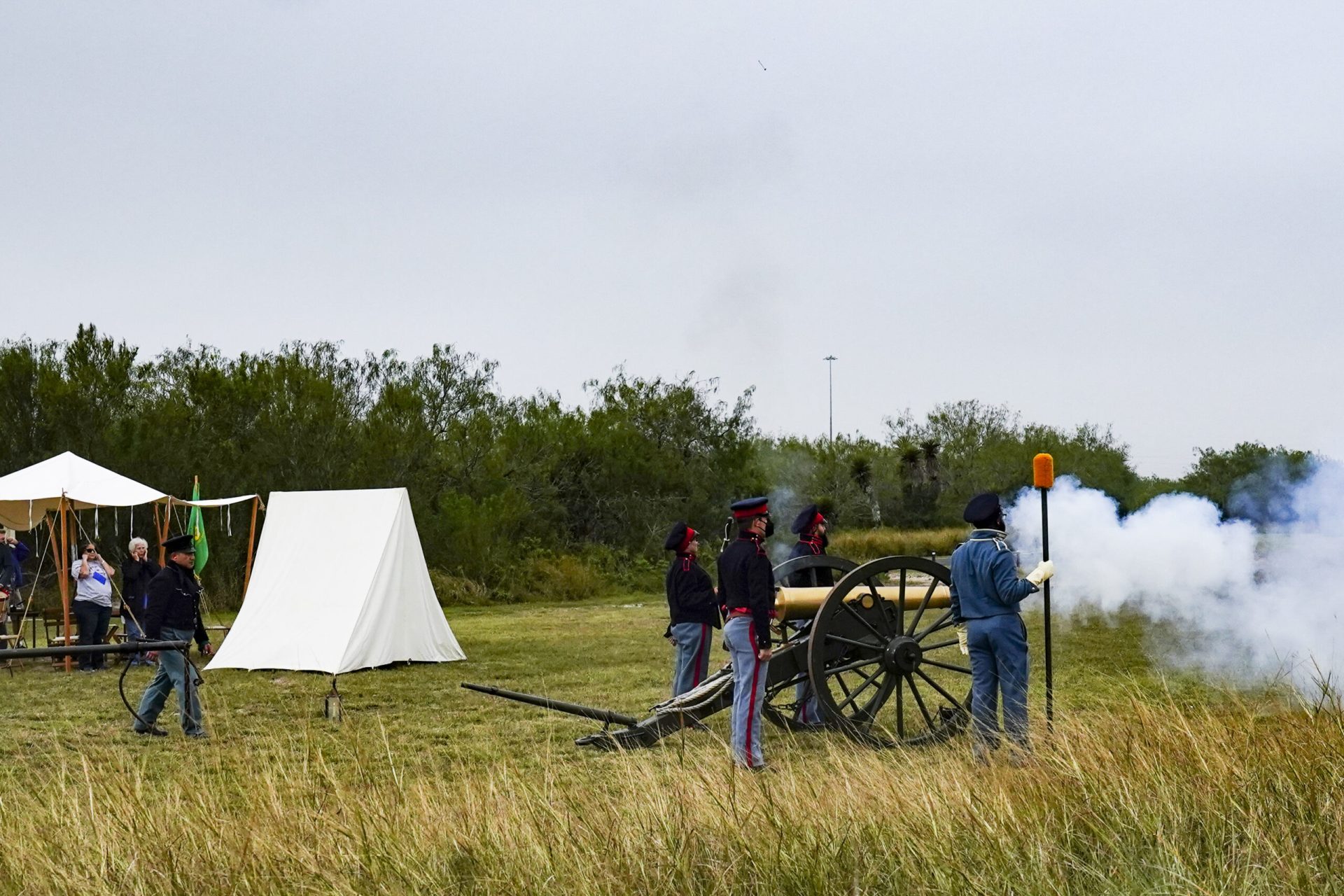A cloud of smoke trailed from a 6-pounder field gun over the prairie of Palo Alto Saturday morning as Mexican and U.S. soldiers once again gathered at the site of one of the battles that formed the bedrock of the Mexican-American War in the Rio Grande Valley.
Unlike in 1846, the presence of soldiers and artillery didn’t signal conflict, but the return —after a two-year hiatus due to COVID-19 precautions — of the Living History demonstrations for visitors to Palo Alto Battlefield National Historical Park.
Visitors listened to lectures from history buffs and studied reenactors like Rob Ramaker, a professor of history at Texas Southmost College in Brownsville.
“We come out here because we want to try and keep history alive,” he said.

To do that, the group tries to make history as hands-on as possible with demonstrations of weaponry, artifacts, military fife and drum and what daily life was like in an encampment.
For Ramaker, imparting the reality of the human experience in history — not from the perspective of generals — but from the soldiers whose lives were shaped directly by the day-to-day events of the war is an important aspect of the event.
Dressed as a Mexican granadero (grenadier), specifically of the Fourth Infantry Regiment, in the uniform worn from around 1836 to 1848, Ramaker shows visitors his equipment and why he carried it; and shares some of the difficulties soldiers experienced during this time.
“Part of what we do is to try and give aspect to the human experience, to talk about that even when technology changes —humans are still practically the same,” he said.

Even if humans haven’t changed much over nearly two centuries — weaponry has.
Mateo Hernandez, a retired history teacher from Harlingen is the capitán of the Fourth Infantry Regiment of the Mexican Army for the group. With 15 years of participating in events like these, he’s an informal expert on the firearms of the Mexican-American War.
Firing a musket is not an exact science. Hernandez demonstrates with his group of three soldiers and an irregular cavalryman to form a firing line for a musket volley demonstration. Hernandez calls out the commands for everyone to get their weapons ready — four fire as sparks and columns of smoke erupt from their guns in quick succession.
The fifth, Luis Sepulveda of Corpus Christi, has a mishap and drops the percussion cap for his musket, which means he can’t ignite the powder to fire. Once he finds it — he fires and then falls back into line.

Hernandez jokes that he’s the capitán only because he’s the one who can say the 11 steps in the battle commands in Spanish for the infantry to fire. Despite the occasional mishap, Hernandez is passionate about sharing his knowledge with visitors, and his fellow soldiers, to create an authentic and informed experience.
If even one person at the event takes away something, especially the few history teachers that have shown up that day, Hernandez is satisfied as keeping local history alive and well in the people living here is, for him, essential.
“We know about General Washington, the American Independence movement, the Civil War and some aspects of the Mexican-American War — but nothing else that is here,” he said.
“There’s a lot of history right here. That is what spurs me to come out here to teach our people what happened here.”






